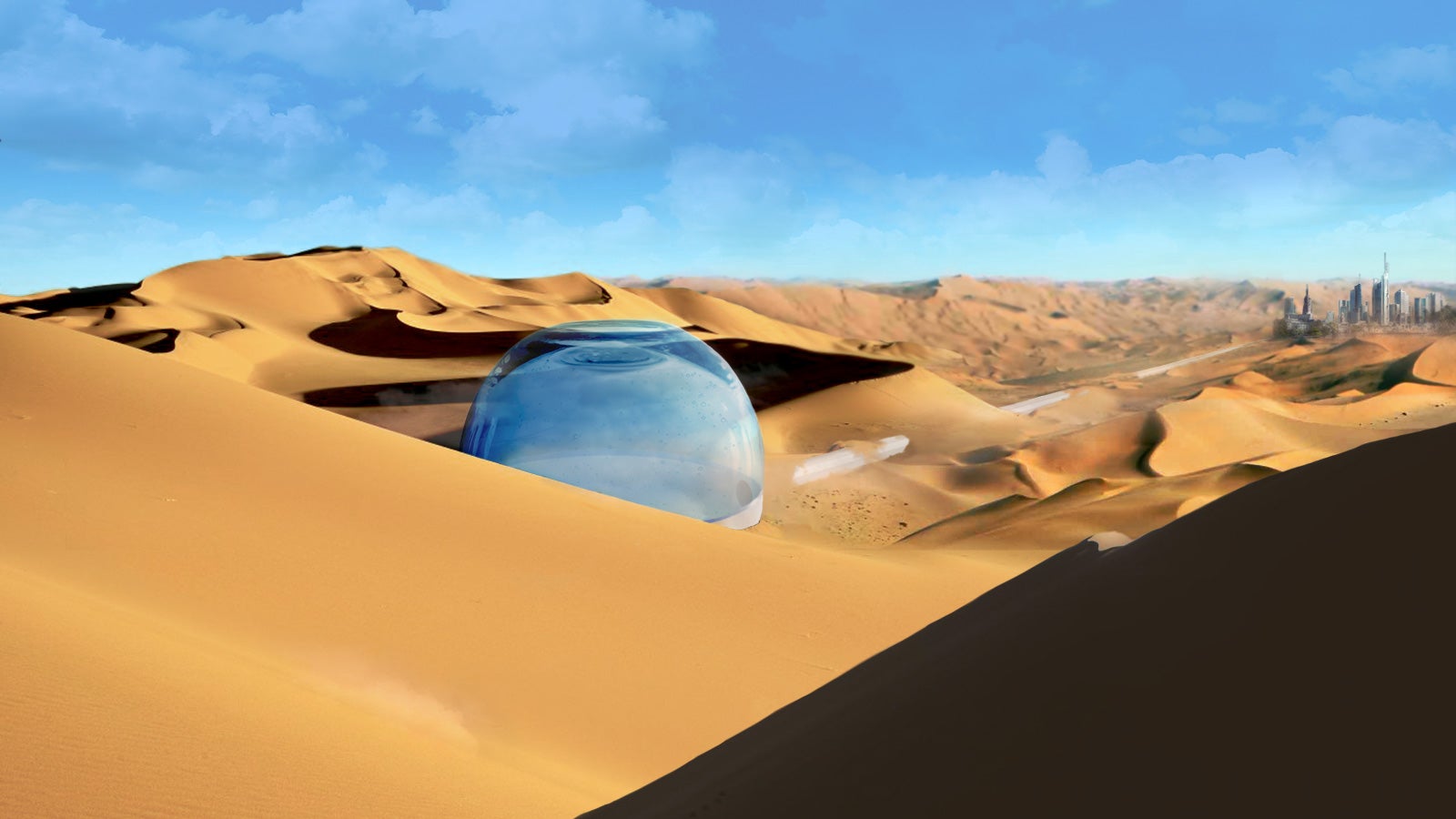The solar technology that is producing fresh drinking water in the desert
California’s mega-drought has people worried about water. Combined with our looming fears of climate change, hydration anxiety has sunk into popular culture with films like Young Ones in the US and Sand Storm in China–both set in a future where clean water becomes valuable contraband. Two of the hottest selling young adult novels now are entitled “The Water Wars” and “Drought,” and Stephanie Meyer, the creator of the Twilight series, recently optioned a drought dystopia screenplay called Not a Drop to Drink.


California’s mega-drought has people worried about water. Combined with our looming fears of climate change, hydration anxiety has sunk into popular culture with films like Young Ones in the US and Sand Storm in China–both set in a future where clean water becomes valuable contraband. Two of the hottest selling young adult novels now are entitled “The Water Wars” and “Drought,” and Stephanie Meyer, the creator of the Twilight series, recently optioned a drought dystopia screenplay called Not a Drop to Drink.
Our fear of losing access to clean water is as ancient as civilization. And for good reason: many of the pipes that carry water to the world’s biggest cities are almost as ancient, and in many cities these pipes and pumps have fallen into disrepair.
Fortunately, upgrading our water systems could prevent the fictional nightmare scenarios we fear most, reversing our waterless future.
The first major problem is waste. Upgrading infrastructure can save massive amounts of water. Intelligent water systems–like the solution developed through Hitachi’s partnership with OSIsoft (PDF)–can relay data about small leaks from pipes, pumps, and pressure-flow meters into one centralized system, which could someday dispatch warnings to repair crews, cars on the road, and local police, telling them to reroute in preparation of emergency repair work.
Smart infrastructure systems can also predict big breakages before they happen. By looking at patterns of leaks and repairs to a certain part of the grid, a smart water system could use historical data to predict where and when safety problems are most likely, allowing municipal workers to address problems before they disrupt the city.
Solar-powered desalination plants in arid locations without permanent water sources and little rainfall are also working against perpetual dryness. Hitachi developed this Social Innovation with The Environment Agency - Abu Dhabi to utilize the brackish and saline groundwater to produce fresh water that can be used for drinking and irrigation in the desert and remote areas where there is no water supply grid.
While this is good news, the situation is growing more complex as the environment in the American West gets more arid. Climate scientists believe California’s climate for the last 150 years has been exceptionally wet given the trends of the last 8,000 years, and adjusting to low-water conditions may become a permanent concern, even holding man-made causes aside.
If conditions continue, most reservoirs will never fill. Irrigated farm acreage will decline, and certain ecosystems will dry up. Urban and suburban water prices will skyrocket.
As water companies raise rates to meet demand, municipal governments will look to intelligent water systems to save enormous amounts of money while keeping homes and gardens green. Once in place, intelligent water-saving systems will continue to pay for themselves as the price of water rises over time. While our biggest concerns about hydration play out on the silver screens this year, with smart infrastructure, the future of water may not be so dramatic after all.
Read more about the efforts to preserve our global water supply at Hitachi’s Social Innovation site.
This article was produced on behalf of Hitachi by the Quartz marketing team and not by the Quartz editorial staff.